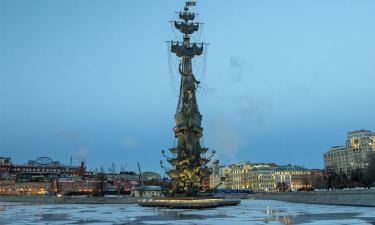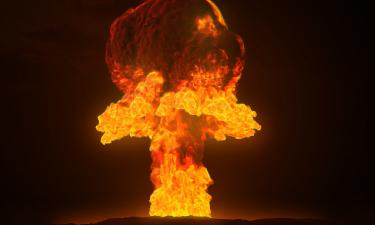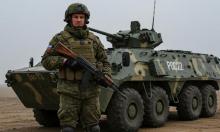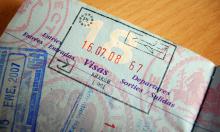Unconditional surrender signed by Japan 60 years ago finished WWII
The new era in history of Japan and the whole Asian Pacific region was about to begin
World War II drew to a close 60 years ago on September 2nd, 1945. Japan signed a formal unconditional surrender on that day. Following the military defeat, the Country of the Rising Sun changed its political system and focused on the economic development. Building a modern economy was a spectacular success story. Nowadays Japan tends to play an increasingly active role in the world of international politics. In the meantime, many unresolved issues come to light e.g. the longstanding dispute between Russia and Japan over the ownership of the South Kurile Islands.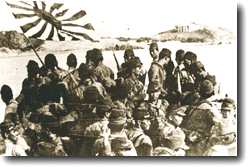
It became quite clear that Japan's days were numbered after the Soviet Union joined the U.S. and Britain in the military operations against Japan. Following the atomic bombings of Hiroshima and Nagasaki on August 6th and 9th of 1945, Japan's Emperor Hirohito announced his readiness to sign an unconditional surrender. The new era in history of Japan and the whole Asian Pacific region was about to begin.
U.S. troops occupied Japan. The Japanese state machinery has been cleansed and the armed forces were disbanded. A new constitution (penned mostly by U.S. general Douglas MacArthur) came into effect in spring of 1947. The constitution imposed a ban on the armed forces, a small self-defense military contingent was put together instead. The emperor remained a formal head of state though the prime minister had real power. The new authorities broke up the closed-end corporations that were the cornerstone of the Japanese economy before the war. The workers were given rights to organize trade unions and conduct strikes. In other words, a Western-style democracy was set to take root in Japan.
The relations between the USSR and the U.S. deteriorated dramatically shortly after the end of WWII. As a result, the relations between the USSR and Japan were pretty tense. No wonder since the U.S. had a tight grip on Japan's foreign policy and trade. Sigeru Esida became the first Japanese Prime Minister. He strongly objected to any kind of relations with the Soviet Union. The peace treaty was signed in September of 1951 in San Francisco. In accordance with the treaty, the following territories were renounced by Japan: South Sakhalin, Kurile Islands, Taiwan, Korea, Manchuria and several minor islands in the Pacific and East China Sea.
The Korean conflict was still in progress and therefore the Soviet Union refused to send a delegation to sign the peace treaty. As a result, the USSR and Japan remained in a state of war and without diplomatic relations.
However, the governments in Moscow, Tokyo, and Washington alike felt the need for changes. The USSR and Japan began working on a draft peace agreement and the restoration of diplomatic relations in spring of 1955. The bilateral relations were finally restored in the fall of 1956. However, a declaration was signed in lieu of the peace agreement. Soviet leader Nikita Khrushchev suggested that Japan shut down U.S. military bases and get two of the South Kurile Islands in return. The U.S. opposed the offer. Besides, Japan demanded the transfer of all four islands. The ownership of the islands is still in dispute, no maritime border has been set yet, and no peace agreement has been signed.
Meanwhile, not unlike in the case of Germany and Italy, a disparity between Japan's economic influence and its political clout on the international level was getting obvious. A turning point took place in 1990 when several hundred Japanese soldiers participated in U.N. peace mission in Cambodia. Japan along with Germany was demanding permanent membership on the U.N. Security Council. Japanese goods and companies spread all over the world and thus boosted Japan's political standing. Searching for a solution to any important international issue would invariably bring Japan on board. It is not for nothing that the Kyoto Protocol was signed in Japan.
Junichiro Koizumi was elected Japan's prime minister in April of 2001. The new government brought its ambition for a political revenge to the fore. The prime minister repeatedly visited the Yasukuni shrine. Some history textbooks began to play down the atrocities committed by Japanese military against the Koreans and Chinese. Japan sent a few hundred troops to Iraq in 2003. Military intelligence and counterintelligence units were formed in the self-defense forces. These days the self-defense forces are a 160,000-strong contingent that is starting to closely resemble a modern army.
The Japanese became the most implacable participants of the talks on North Korea's nuclear program. They demanded that all the North Korean nuclear reactors be shut down. Prime Minister Koizumi threatened to boycott the May 9th event in Moscow marking 60th anniversary of the victory in WWII. Mr. Koizumi's intentions were meant to protest Russia's stance on the peace agreement that remains unsigned. Eventually, he changed his mind and arrived in Moscow.
Japan's actions sparked anger and resentment in China and Korea that had to put up with Japanese invaders during in the 1930s and 1940s. A wave of public protests swept across China and Korea. The Chinese Foreign Ministry demanded that Japan stop airbrushing the historical events in the textbooks. Despite Mr. Koizumi's apology for the atrocities and suffering caused by the Japanese to many nations during the colonial rule, he keeps visiting the Yasukini shrine.
Apart from the above, the draft of a new Japanese constitution is already ready. The document provides for the formation of a full-fledged “Defense Army” which should use every means and methods for repelling foreign aggression. The army should be 160,000 strong, the number could be increased up to 375,000 in times of war. The right for collective defense i.e. joining military organizations is stipulated by the new constitution. Active monitoring of China and North Korea is part of a new military doctrine. Under the new provisions, Japan will be allowed to export missile components to the U.S. The arms export ban effective since 1967 will be effectively canceled. It is noteworthy that Japan's electricity is largely produced by nuclear power plants. Japan has all nuclear technologies on hand and can start producing nuclear weapons at any moment.
In view of the above, it would not be an exaggeration to say that Japan is stepping up its efforts aiming to become at least a regional economic and military superpower. Japan is becoming increasingly active at the international scene. Japan's stance on the Kurile problem is getting tougher. The Japanese keep pointing out that the two islands i.e. Shikotan and Habamai (the very islands Mr. Khrushchev offered for a deal) had been part of Hokkaido prefecture way before 1945. At this point we have an apparent divergence regarding the interpretation of the concept of the Kurile Islands. Unlike Russia, Japan does not believe that geographical and legal definitions of the Kuriles are identical.
It is impossible to predict an outcome of this argument. Given China's economic and military muscle, the U.S. and EU are ready to provide any assistance to Japan as a counterbalance to the Chinese in the region. The European Parliament already passed a resolution calling on Russia to give back four islands to Japan. U.S. Secretary of Defense Donald Rumsfeld also spoke about it.
Ivan Shmelev
Subscribe to Pravda.Ru Telegram channel, Facebook, RSS!
